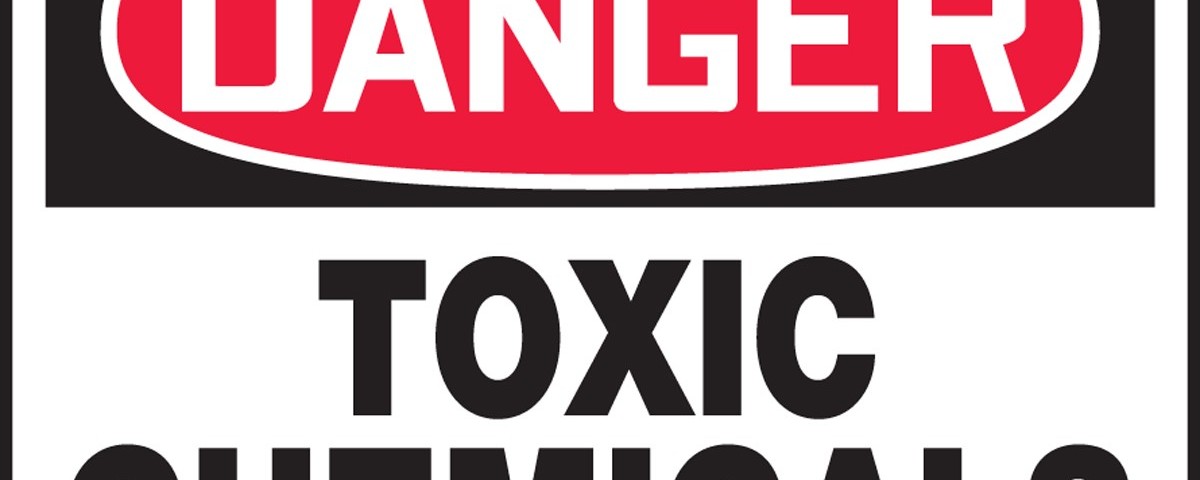
Dangers of Bleach in the Work Place
September 10, 2015
15 ways to become eco friendly
September 10, 2015When consumers buy commercial cleaning products, we expect them to do one thing: clean! We use a wide array of scents, soaps, detergents, bleaching agents, softeners, scourers, polishes, and specialized cleaners for bathrooms, glass, drains, and ovens to keep our homes sparkling and sweet-smelling. But while the chemicals in cleaners foam, bleach, and disinfect to make our dishes, bathtubs and countertops gleaming and germ-free, many also contribute to indoor air pollution, are poisonous if ingested, and can be harmful if inhaled or touched. In fact, some cleaners are among the most toxic products found in the home. In 2000, cleaning products were responsible for nearly 10% of all toxic exposures reported to U.S. Poison Control Centers, accounting for 206,636 calls. Of these, 120,434 exposures involved children under six, who can swallow or spill cleaners stored or left open inside the home.
Cleaning ingredients vary in the type of health hazard they pose. Some cause acute, or immediate, hazards such as skin or respiratory irritation, watery eyes, or chemical burns, while others are associated with chronic, or long-term, effects such as cancer.
The most acutely dangerous cleaning products are corrosive drain cleaners, oven cleaners, and acidic toilet bowl cleaners, according to Philip Dickey of the Washington Toxics Coalition. Corrosive chemicals can cause severe burns on eyes, skin and, if ingested, on the throat and esophagus. Ingredients with high acute toxicity include chlorine bleach and ammonia, which produce fumes that are highly irritating to eyes, nose, throat and lungs, and should not be used by people with asthma or lung or heart problems. These two chemicals pose an added threat in that they can react with each other or other chemicals to form lung-damaging gases. Combining products that contain chlorine and ammonia or ammonia and lye (in some oven cleaners) produces chloramine gases, while chlorine combined with acids (commonly used in toilet bowl cleaners) forms toxic chlorine gas.
Fragrances added to many cleaners, most notably laundry detergents and fabric softeners, may cause acute effects such as respiratory irritation, headache, sneezing, and watery eyes in sensitive individuals or allergy and asthma sufferers. The National Institute of Occupational Safety and Health has found that one-third of the substances used in the fragrance industry are toxic. But because the chemical formulas of fragrances are considered trade secrets, companies aren’t required to list their ingredients but merely label them as containing “fragrance.”
Other ingredients in cleaners may have low acute toxicity but contribute to long-term health effects, such as cancer or hormone disruption. Some all-purpose cleaners contain the sudsing agents diethanolamine (DEA) and triethanolamine (TEA). When these substances come into contact with nitrites, often present as undisclosed preservatives or contaminants, they react to form nitrosamines – carcinogens that readily penetrate the skin. 1,4-dioxane, another suspected carcinogen, may be present in cleaners made with ethoxylated alcohols. Butyl cellosolve (also known as ethylene glycol monobutyl ether), which may be neurotoxic (or cause damage to the brain and nervous system), is also present in some cleaners.
Chemicals that are so-called “hormone disruptors” can interfere with the body’s natural chemical messages, either by blocking or mimicking the actions of hormones. Possible health effects include decreased sperm counts, increased rates of male birth defects such as cryptorchidism (undescended testicles) and hypospadias (where the urethra is on the underside of the penis), and increased rates of some kinds of cancers. The alkylphenol ethoxylates (APEs) used in some detergents and cleaners have been shown to mimic the hormone estrogen; one APE, p-nonylphenol, has caused estrogen-sensitive breast cancer cells to multiply in a test tube study.
Environmental
After bubbly cleaning liquids disappear down our drains, they are treated along with sewage and other waste water at municipal treatment plants, then discharged into nearby waterways. Most ingredients in chemical cleaners break down into harmless substances during treatment or soon afterward. Others, however, do not, threatening water quality or fish and other wildlife. In a May 2002 study of contaminants in stream water samples across the country, the U.S. Geological Survey found persistent detergent metabolites in 69% of streams tested. Sixty-six percent contained disinfectants.
The detergent metabolites the USGS detected were members of a class of chemicals called alkylphenol ethoxylates (APEs). APEs, which include nonylphenol ethoxylates and octylphenol ethoxylates, are surfactants, or “surface active agents” that are key to detergents’ effectiveness. They are added to some laundry detergents, disinfectants, laundry stain removers, and citrus cleaner/degreasers. When discharged in municipal waste water, nonylphenol ethoxylates and octylphenol ethoxylates break down into nonylphenol and octylphenol, which are more toxic and do not readily biodegrade in soil and water. APEs have been shown to mimic the hormone estrogen, and their presence in water may be harming the reproduction and survival of salmon and other fish. For example, in Britain, researcher John Sumpter discovered that male fish exposed to APEs in rivers were producing female egg-yolk proteins. APE pollution may be threatening fish in the U.S. as well, for octylphenol and nonylphenol were the detergent metabolites that the USGS detected in 69% of streams tested here. Such ubiquity may not bode well for humans, either: the APE p-nonylphenol has also caused estrogen-sensitive breast cancer cells to proliferate in test tubes.
Another famous water pollutant is phosphates, water-softening mineral additives that were once widely used in laundry detergents and other cleaners. When phosphates enter waterways, they act as a fertilizer, spawning overgrowth of algae. This overabundance of aquatic plant life eventually depletes the water’s oxygen supply, killing off fish and other organisms. Although many states have banned phosphates from laundry detergents and some other cleaners, they are still used in automatic dishwasher detergents.
Another environmental concern with cleaning products is that many use chemicals that are petroleum-based, contributing to the depletion of this non-renewable resource and increasing our nation’s dependence on imported oil.
The plastic bottles used to package cleaning products pose another environmental problem by contributing to the mounds of solid waste that must be landfilled, incinerated or, in not enough cases, recycled. Most cleaners are bottled in high-density polyethylene (HDPE, denoted by the #2 inside the recycling triangle) or polyethylene terephthalate (PETE, #1) which are accepted for recycling in a growing number of communities. However, some are bottled in polyvinyl chloride (PVC, #3). PVC, otherwise known as vinyl, is made from cancer-causing chemicals such as vinyl chloride, and it forms as a byproduct a potent carcinogen, dioxin, during production and incineration. As a final insult, most sanitation departments do not accept PVC for recycling; less than 1% of all PVC is recycled each year.
Household Cleaning Supplies
THE SOLUTIONS
What to look for
A few safe, simple ingredients like soap, water, baking soda, vinegar, lemon juice and borax, aided by a little elbow grease and a coarse sponge for scrubbing, can take care of most household cleaning needs. And they can save you lots of money wasted on unnecessary, specialized cleaners! For that reason, we’ve provided recipes for do-it-yourself cleaners under most product categories (See Product Comparisons).
However, when you need the convenience or the added power of pre-made, commercial cleaners, or for the basics like laundry and dishwashing detergents, here are some shopping guidelines to help you choose products with the lowest impact on your health and the environment:
1. Although most cleaners don’t list ingredients, you can learn something about a product’s hazards by reading its label. Most labels bear a signal word, such as Danger, Warning or Caution, that provides some indication of a product’s toxicity. Products labeled Danger or Poison are typically most hazardous; those bearing a Warning label are moderately hazardous, and formulas with a Caution label are considered slightly toxic. If you find them, choose products that are nontoxic enough that they require none of the signal words above on their label. Beside the signal word is usually a phrase that describes the nature of the hazard, such as “may cause skin irritation,” “flammable,” “vapors harmful,” or “may cause burns on contact.” Look for instructions on how to use the product, which may help you avoid injury. Some labels do list active ingredients, which may assist you in detecting caustic or irritating ingredients you may wish to avoid, such as ammonia or sodium hypochlorite. A few manufacturers voluntarily list all ingredients.
2. When gauging ecological claims, look for specifics. For example, “biodegradable in 3 to 5 days” holds a lot more meaning than “biodegradable,” as most substances will eventually break down if given enough time and the right ecological conditions. And claims like “no solvents,” “no phosphates,” or “plant-based” are more meaningful than vague terms like “ecologically-friendly” or “natural.”‘
3. When ingredients are listed, choose products made with plant-based, instead of petroleum-based, ingredients.
4. To reduce packaging waste: Choose cleaners in the largest container sizes available; especially seek out bulk sizes. Select products in bottles made with at least some recycled plastic. By doing so, you support companies that are providing a vital end-market for recycled plastic (without this market, recycling would not be possible). And choose concentrated formulas, which contain only 20% or less water. Because dilution with water is done at home, not at the factory, concentrated cleaners overall require less packaging and fuels for shipping.
What to look out for
Avoid cleaners marked “Danger” or “Poison” on the label, and look out for other tell-tale hazard warnings, such as “corrosive” or “may cause burns.”
Avoid products that list active ingredients of chlorine or ammonia, which can cause respiratory and skin irritation and will create toxic fumes if accidentally mixed together.
Protect water quality and aquatic life by refusing to purchase detergents containing phosphates, which may cause algal blooms, or alkylphenol ethoxylates, including nonylphenol and octylphenol. Unfortunately, these ingredients are rarely, if ever, disclosed on labels; however, the brands recommended in this report are, to the best of our knowledge, phosphate- and APE-free.
Beware of unregulated “greenwash” claims on labels! Terms such as “natural” and “eco-friendly” shouldn’t be equated with safety unless they’re backed up with specific ingredient information, such as “solvent-free,” “no petroleum-based ingredients,” “no phosphates,” etc. “Non-toxic” has no official definition, so unless a third party has verified this claim, it is not considered meaningful. And don’t believe “organic” ingredients in cleaning and other chemical products are any safer than other substances. Although “organic” in the grocery store refers to foods grown without synthetic pesticides, in chemistry it refers to chemicals that are carbon-based, including some VOCs (volatile organic compounds) that release harmful fumes and may cause brain damage or cancer.Additionally, watch out for products labeled organic. Household cleaning products aren’t regulated by the Organic Foods Production Act, but some of their ingredients, such as plant oils, can be labeled “certified organic.” For more info, see ecolabels.org.
Be aware that some labels that may make a product appear eco-friendly are actually meaningless. For example, many aerosol spray cans are labeled “no CFCs” (or chlorofluorocarbons, which deplete the ozone layer), leading consumers to believe they are buying a more eco-friendly product by purchasing that brand. In reality, CFCs have been banned from aerosols since 1978, so none are permitted to contain CFCs. And think of all of the resources that would be saved if companies that advertise their packaging as “100% recyclable” actually switched to materials that are “100% recycled!”




